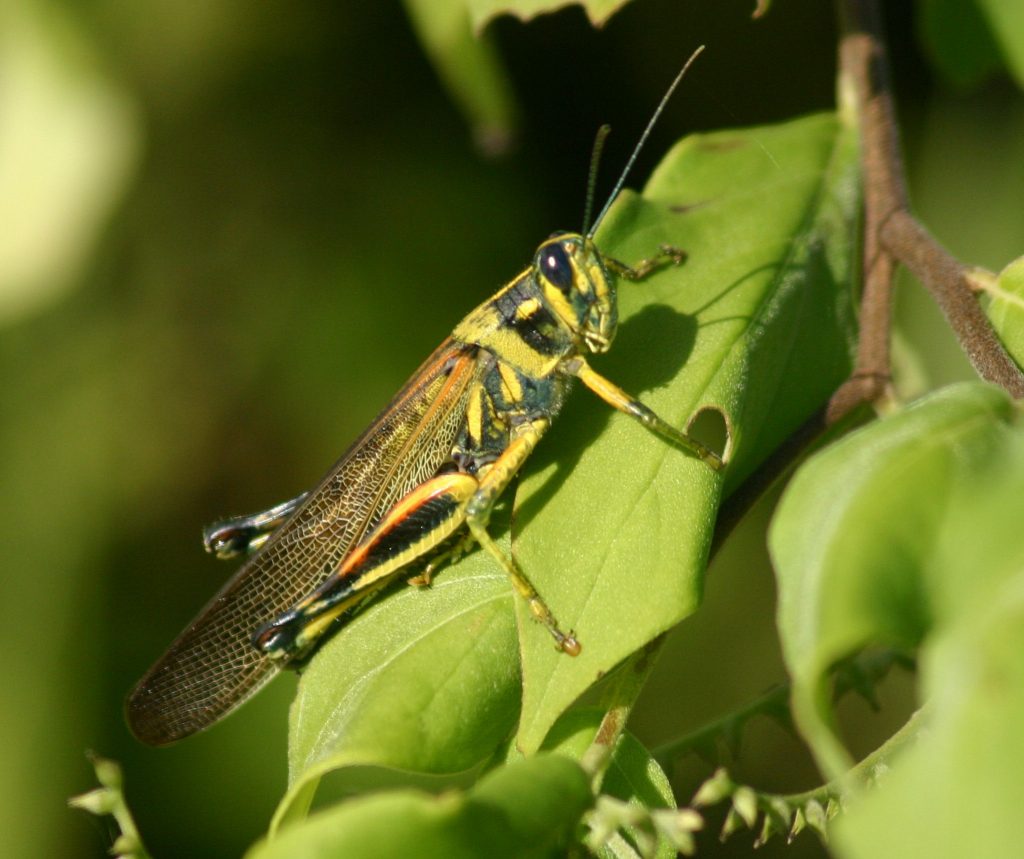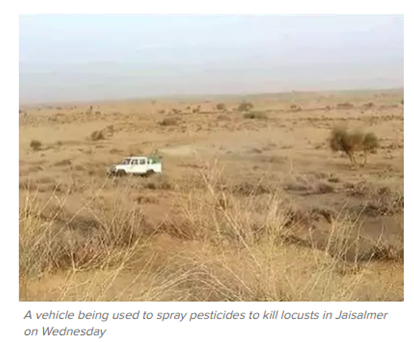
Locusts are related to grasshoppers and the two insects look similar. However, locust behavior can be something else entirely. Locusts are sometimes solitary insects with lifestyles much like grasshoppers. But locusts have another behavioral phase called the gregarious phase where they move with other locusts collectively and attacks on crop field.
Locusts are found on all continents except Antarctica and North America. They are most common in Africa and Asia.
Locust swarms devastate crops and cause major agricultural damage and attendant human misery – shortage and starvation. Locust outbreaks have the potential to affect the livelihoods of one in ten people on the planet.
Desert locust plagues may threaten the economic livelihood of one-tenth of the world’s humans.
Desert locusts affect 20 percent of the world’s land surface, scientists say.
Desert locusts live in barren regions that see rain only rarely. They eke out an existence alone when times are tough. When the rains come, they breed like crazy. Then things dry up, and hordes of locusts are forced to gather around diminishing patches of vegetation.
These massive swarms travel as many as 160 kilometers (100 miles) a day.
The recent invasions can give you an idea about the same:
Invasion of Locusts damages Wafra farms in Kuwait
Swarms of Locust invade Kuwait
KUWAIT CITY, May 1: Despite the attempts of the Public Authority for Agriculture Affairs and Fish Resources (PAAAFR) to fight the swarms of locusts coming from Saudi Arabia towards the Wafra farms, it looks like the yellow locusts have won the battle and caused heavy material losses to many farms, reports Al-Qabas daily. The swarms invaded the farms about three days ago and destroyed tomatoes, cloves and other products and even attempted to invade the ‘hydroponic farms’ causing material losses that could have negative consequences on the vegetables and cattle market due to hike in prices of products.
‘Avoid using pesticides for killing locusts in Jaisalmer’
TNN | May 30, 2019

JAIPUR: Chief wildlife warden of Rajasthan has written to the state agriculture department to avoid using pesticides for killing locusts in Jaisalmer which in turn is harming the Great Indian Bustard (GIB) which regularly feed on these insects.
The wildlife department is also taking the help of scientists from Wildlife Institute of India (WII) to find a pesticide which just targets the locusts and doesn’t harm any other animal or bird.
The letter (a copy of which is with TOI) states that pesticides being sprayed in Jaisalmer district to kill locusts has become a threat to the GIB particularly in Ramdeora, Lokarki and nearby areas since the state bird regularly feeds on this insect thus there is a threat to the health of GIBs which consume them.
The letter further urges that not only the use of harmful pesticides should be avoided but suitable taxa-specific biopesticides may be utilised for overcoming the locust’s problem without affecting the GIB.
Spraying with solutions of arsenic and overturning the soil can destroy the eggs but this is extremely lethal.
We need a solution that can be both effective against the locusts and also safe for other animals, humans, and the environment.
CombirepelTM can be a boon in this crisis. CombirepelTM is an extremely low toxic and low hazardous insect repellent produced by C Tech Corporation. It can be best described as an insect aversive repellent. It is effective against multiple other insects and pests like thrips, locusts, beetles, bugs, armyworms, etc. It works on the mechanism of repellence and therefore does not kill the target as well as non-target species.
Being low toxic, it does not harm the soil and environment. Combirepel™ can be added to a thin agricultural film to protect plants and other crops.
Our product available in the form of masterbatch can be incorporated into polymeric applications like the tree guards and fences, agricultural films and mulches, irrigation pipes, wires, and cables, etc. to keep these insects away from the trees and crops.
The liquid concentrate can be mixed in paints and be applied on the concrete fence around the gardens, farms, and buildings. The liquid concentrate can be applied to the interior and exterior of storage rooms used to store grains and other agricultural produce.
The product available in the form of lacquer can be used as a direct application and can be applied on the tree trunks, wooden fences around trees, crops, and farms, already installed pipes and polymeric parts from agricultural equipment like motors, tractors, etc.
To keep the locusts at the bay TermirepelTM insect repellent spray and CombirepelTM pest repellent spray can be sprayed.
Contact us at technical.marketing@ctechcorporation.com if you have problems with these tiny bugs and other insects.
We have a solution for you for more details about our product just head on to our websites-
http://www.ctechcorporation.com/
http://www.rodrepel.com/
http://www.termirepel.com/
http://www.combirepel.com/
Follow our Facebook pages at:
1] https://www.facebook.com/Combirepel-411710912249274/
2] https://www.facebook.com/Termirepel-104225413091251/
3] https://www.facebook.com/Rodrepel-120734974768048/
Follow us on our Twitter pages at:
1] https://twitter.com/rodrepel
2] https://twitter.com/termirepel
3] https://twitter.com/combirepel
